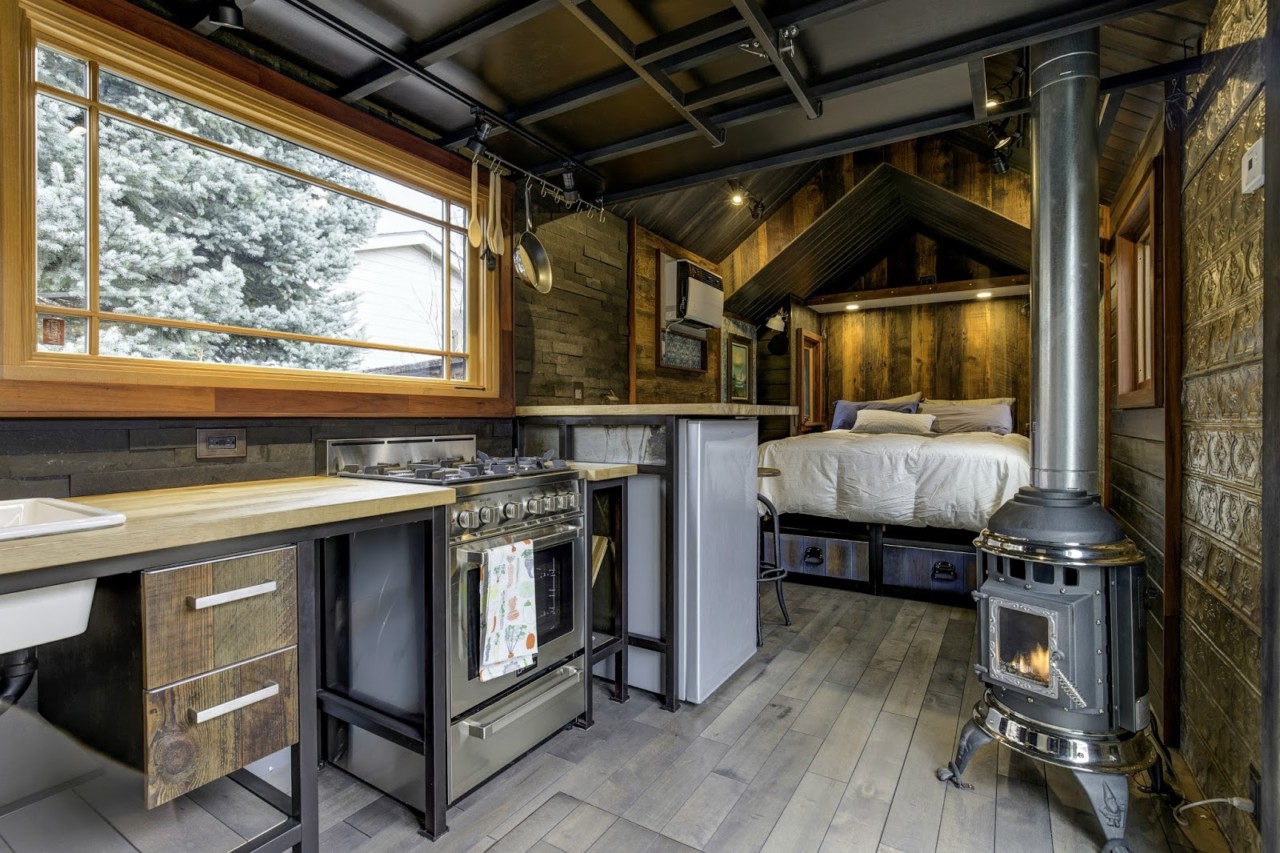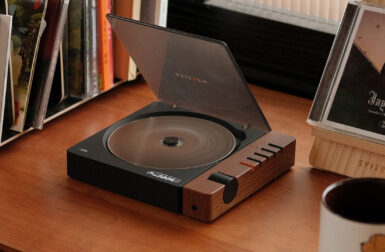The Tiny Home phenomenon. Is it a media-created craze? An extension of the Airbnb economy? A millennial uprising against excessive unsustainable consumption? Or perhaps merely the culmination of desires to find a path toward a simplified and less stressful lifestyle – an architectural/residential extension of Marie Kondo’s philosophical commitment to discovering more while living with less.
Whether out of financial necessity, environmental motivations, or simply in pursuit of additional live/work space, the only thing for sure is the 400 square foot and under tiny house movement is still a hot button topic, one that has given rise to entire new industries committed to outfitting anyone’s tiny home dreams with the same amenities of a larger residence.
Take for example this Provincetown, Massachusetts cottage (shown above) – a 300 sq. ft. case study of attentive planning and customized solutions, executed by Cape Associates project manager Derik Burgess. Renovating a tiny cottage into a year-round living abode required outfitting the surprisingly airy kitchen with appliances with modest dimensions, like the 24” Verona Gas Wall Oven and a 12” Deluxe 2 Burner Gas Cooktop (shown below) to maximize limited space. In addition to being space conscious, the cooktop and wall oven both only require a 110v connection – eliminating the need for the standard 220v connection of traditional sized homes.

Creative space saving solutions like Build Tiny‘s slide-out staircase connects the floor level to a sleeping loft. Photo: Build Tiny.
The most inspiring tiny homes showcase an acknowledgment of the limitations and challenges presented by small space living, then creatively work in harmony with the challenge instead of against it. Take for example The Millennial Tiny House Prototype, a New Zealand built model that connects its living quarters with a sleeping space and another work space via two slide-out lightweight, welded aluminum frame staircases hidden within its built-in storage walls. Small and smart, the tiny home turns its most unique functional feature into a design element.
The tiny home movement’s roots may have sprouted forth from the realm of the eco-conscious, with environmentally-friendly technologies like waterless composting toilets, solar power solutions, and other net-zero solutions inherently woven into the tiny home DNA. But it’s equally important to acknowledge the tiny home phenomena has evolved well beyond its grassroots toward higher aspirations catering to the most current of comforts, finishes, and quality of living, leaving behind the “roughing it/make do” spirit of the 1st wave of tiny homesteaders who paved the way.
Just take a look at Kasita, a micro-housing solution conjured up by Austin-based Jeff Wilson after a year committed to living inside the confines of a converted 33 sq. ft. dumpster, all to “test the limits of habitable space”. Despite its modest 352-square-foot footprint, it would be impossible to call the Kasita concept anything but luxurious – a far cry from his dumpster days.

The Kasita micro home incorporates hidden high-tech solutions for small space living. Photo: Kasita.
Outfitted with technological amenities throughout – automatic dimming windows with programmable tint modes, Big Ass Fan’s Haiku smart ceiling fan connected to a smart thermostat, Alexa controls throughout, an all-in-one washer and dryer, and even a hidden flat panel HDTV that rises up for viewing at the touch of a button – the Kasita tiny home embodies all the possibilities of living very comfortably, whether imagined as an add-on structure or primary residence.
Even if you’re not ready to dive into the tiny home lifestyle, there are opportunities to integrate many of its tenets of living in awareness of space, function, and everyday necessity. Some examples of stylish solutions applicable for any small space:

ILVE Appliances 24” Nostalgie Gas Range offers a fashionable range of colors into the kitchen along with 4 high power BTU burners for serious home cooks living in a tiny space.

The OSLO 173 converts from a two-seat sofa into a queen-sized bed.

Tiny homes with kitchens won’t always have room for a normal size range, but space efficient two-burner cook tops like the 12” Gas Deluxe Cooktop and the 12” Electric Ceramic Smooth Top Cooktop from Verona Appliances can appease the needs of the culinary minded.
Thanks to their modest dimensions, tiny homes can open the doors to a home owner’s formerly unattainable residential dreams – the best in flooring, architectural hardware, innovative lighting, luxury home appliances, solar panels, and the latest in smart home technologies can all be incorporated into the smaller scale floor plans of a custom or self-designed structure at a fraction of the costs of a full-size home.
Many antecedents to the tiny home movement existed long before within the lives of small space apartment dwellers, a population who’ve long made due with maximizing function and minimizing footprint. So even if the tiny home lifestyle isn’t in your future, it’s still beneficial to recognize the merits of a lifestyle and design movement that values unobtrusive, space-saving, eco-efficient, and functional living solutions. In this way, those of us living in homes, apartments, and other living spaces of any size can learn from the tiny home movement to live well with what we have – something that will never fall out of fashion.

















